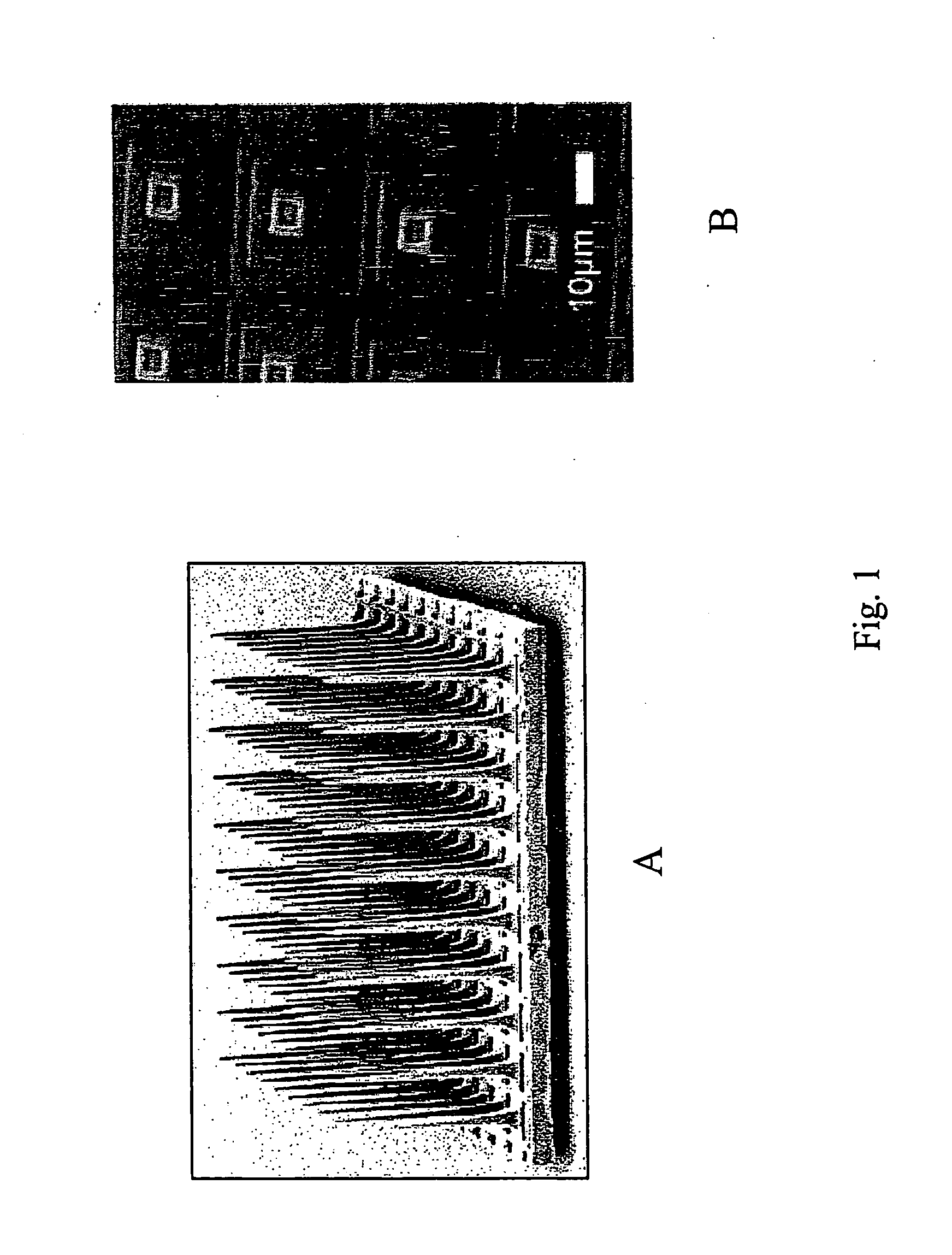Visual prosthesis and methods of creating visual perceptions
- Summary
- Abstract
- Description
- Claims
- Application Information
AI Technical Summary
Benefits of technology
Problems solved by technology
Method used
Image
Examples
example 1
[0095]To determine what a monkey sees when electrical stimulation is applied to the LGN, we took advantage of the natural primate reaction to look at any suddenly illuminated point of light. This was used to train monkeys to perform quick, direct eye movements, known as saccades, from one visual target to another. Our findings support the idea that focal electrical stimulation in the LGN creates point-like visual percepts, or phosphenes, that are interpreted as normal visual events.
[0096]Fine wire electrodes were placed in the lateral geniculate nucleus of awake behaving monkeys using traditional means. Cells at the end of the electrodes were characterized in visual space, creating a receptive field map, which showed the visual location for which those cells were responsible. Electrical signals were then applied to the wires, stimulating these same neurons, and creating a focal visual percept. We verified that the generated percept corresponded to the receptive field focus by traini...
example 2
[0102]In the series of experiments described in FIG. 2, we first placed a micro-wire bundle electrode, or tetrode, in LGN and mapped the visual responses, or receptive fields, of cells for a given location of the electrode. We then used a center-out saccade task where the animal was required to sit in front of a computer screen and was rewarded for making saccadic eye movements from a central fixation point of light to a target point a short distance away. Optical trials were interleaved with less frequent electrical-stimulation trials (and unstimulated trials, or blanks) to bias the animal towards treating electrical percepts in the same manner as the screen targets (FIG. 11). A set of 100-200 trials were presented in balanced pseudo-random order with respect to optical target position, electrical stimulation, and blank targets (10 conditions in all), for a given experiment. A total of 56 such experiments, each with different electrode placement, were performed in three LGNs of two...
PUM
 Login to View More
Login to View More Abstract
Description
Claims
Application Information
 Login to View More
Login to View More - R&D
- Intellectual Property
- Life Sciences
- Materials
- Tech Scout
- Unparalleled Data Quality
- Higher Quality Content
- 60% Fewer Hallucinations
Browse by: Latest US Patents, China's latest patents, Technical Efficacy Thesaurus, Application Domain, Technology Topic, Popular Technical Reports.
© 2025 PatSnap. All rights reserved.Legal|Privacy policy|Modern Slavery Act Transparency Statement|Sitemap|About US| Contact US: help@patsnap.com



